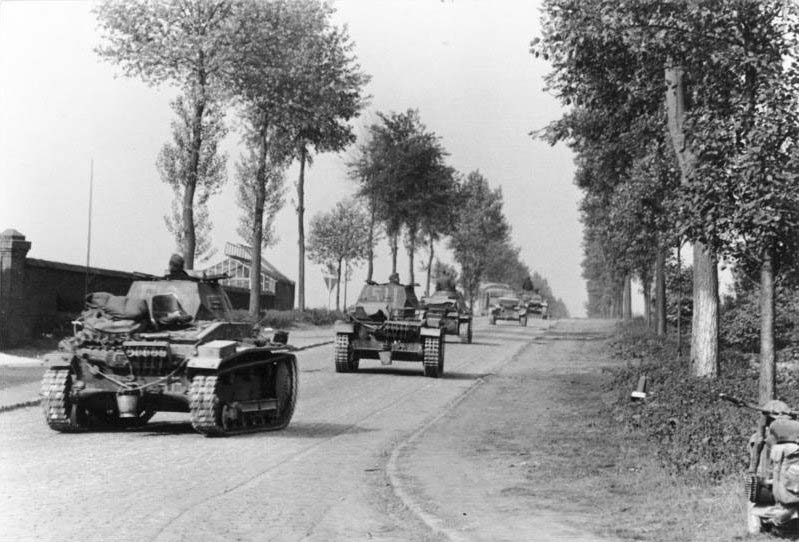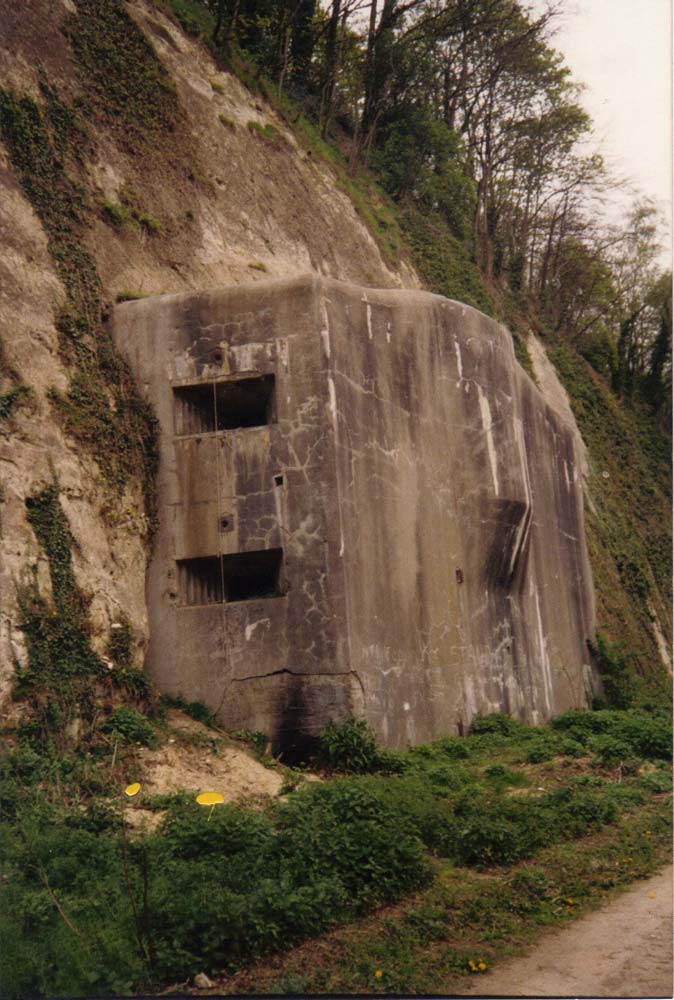| Battle of Belgium | |||||||
|---|---|---|---|---|---|---|---|
 |
|||||||
|
|||||||
| Contenders | |||||||
| Military Leaders | |||||||
| Unit Strength | |||||||
| 144 divisions 13,974 guns 3,384 tanks 2,249 aircraft |
141 Divisions 7,378 guns 2,445 tanks 5,446 aircraft (4,020 operational) |
||||||
| Casualties and Deaths | |||||||
| Total: | Total: | ||||||
| 222,443+ casualties (200,000 captured) ~900 aircraft |
Unknown, but at least 43 paratroopers were killed and a further 100 wounded | ||||||
| Part of World War II | |||||||
Battle of Belgium which is also known as the Belgian Campaign took place over eighteen days in part of the Battle of France in 1940. It was an offensive operation by the Germans in WW2. The Allied Armies had thought that this battle was Germany’s main attack, so they tried to impede the Germans in Belgium.
The battle ended with the Germans occupying Belgium after the Belgian Army had surrendered. The Belgian Campaign included the Battle of Fort Eben-Emael, which was the first tactical airborne operation using paratroopers. It also included the first tank battle (Battle of Hannut) of the war. The collapse of the Belgian prompted the Allied forces to withdraw from continental Europe.
Belgian Neutrality
Before World War 2, King Leopold of Belgium was advocating for a more independent foreign policy for Belgium. On two occasions, he advocated for mediation of the conflict between the Western Allies and Nazi forces a few months before and after the war broke out in 1939.
Although Germany had invaded Belgium in 1914, Belgium returned to a neutrality policy after the war. Before the 1940 invasion, King Leopold promoted the construction of vital defensive fortifications from Namur to Antwerp in front of the Germany border. However, the Germans quickly took the defenses. Belgians were in full support of Leopold’s strategy of armed neutrality. Belgians wanted to be left alone and in peace.
Germany Invasion
 The Germans invaded Belgium for the second time on May 10, 1940. The Germans struck both the Netherlands and Belgium at the same time, marking the start of the long expected German invasion in the West. They started their western campaign on a wide front against the neutral Belgium, Netherlands and Luxemburg.
The Germans invaded Belgium for the second time on May 10, 1940. The Germans struck both the Netherlands and Belgium at the same time, marking the start of the long expected German invasion in the West. They started their western campaign on a wide front against the neutral Belgium, Netherlands and Luxemburg.
The Belgian Defensives
Initially, Belgium had joined World War 1 Allies after the first German invasion. However, when the war ended Belgians decided to seek security through a neutrality policy. There was no military collaboration with France and Britain as Adolf Hitler moved steadily toward war.
Antiwar sentiment was strong in Belgium as the Belgians thought that any cooperation with the Allies would attract the aggression of the Germans. For this reason, when Hitler instigated World War 2, the government of Belgium affirmed her neutrality and refused to allow the French and the British from entering the country to reinforce Belgium’s defense.
Fort Eban-Emael
 This was a large underground fort that dominated 3 well secured bridges over the Albert Canal. The fort was modeled on the French Maginot Line forts and was considered to be impenetrable.
This was a large underground fort that dominated 3 well secured bridges over the Albert Canal. The fort was modeled on the French Maginot Line forts and was considered to be impenetrable.
Over 1,200 Belgian soldiers manned the fort 24/7. Despite this strong defense, a 400-man German glider force attacked the fort silently on the dawn of May 10, 1940, landing 9 gliders directly on the Fort’s top. They then forced their way to the gun emplacements through the roofs and disabled the guns quickly.
After destroying the defending artillery, the rest of the German troops secured 2 of the 3 vital bridges over the canal. This also allowed the German armored troops to cross the well-fortified Belgian border without any resistance or fighting within a few hours.
The K-W line
Belgians held on the K-W line on their own from May 10 to 13, providing a very strong defense. On May 13, the Germans deployed Panzer division which was supported by Luftwaffe and broke through the Allied lines in the Ardenne-Forest.
The Belgians and the French were very shocked by this, since they believed that the region where the Maginot Line ended close to Sedan was impenetrable. When the Germans broke through in the Sedan area, the French troops retreated. This forced the Belgian troops to abandon their strong defense position along the K-W line.
British forces supports the Dutch in the North
Following the invasion of the Nazi to Poland on September 1, 1939, Britain affirmed war on Germany. The BEF (British Expeditionary Force) was sent to France and positioned itself along the Belgian border. The BEF was supported by Royal Air Force that consisted of 500 aircraft. BEF was under the command of General Lord Gort at the time of German invasion.
Despite their fully mechanized force, the BEF were not prepared for Blitzkrieg when the German forces struck in the West. On realizing the attack, Gort sent the BEF to north to help the Dutch and the Belgians. However, the Dutch surrendered after the Rotterdam bombing even before the arrival of the BEF. On May 20th, the Germans reached the Channel close to Abbeville, cutting off King Leopold and his Army.
This also meant that Belgium was surrounded and the Germans were getting closer to occupy Belgium. The Germans dropped some leaflets that informed the Belgian soldiers that Leopold had left for England. However, the King sent a message to his soldiers informing them that he would share their fate no matter what happened.
Belgian Surrender
On May 28, without any consultation with the Allies or his cabinet, Leopold surrendered his army and relented to the Germans. The king’s actions were widely resented by Belgians across the country. The surrender also left the BEF critically exposed, and the British were forced to withdraw from Belgian port of Dunkirk. Although the BEF was near Hitler’s grasp, he ordered his forces not to pursue the British further. This allowed the BEF to evacuate their men as well as many French soldiers.
There is some contradicting information regarding the reason why Hitler allowed the British to leave without harming them. Some say that he needed to regroup and prepare for a bigger battle, while some suggest that he wanted the gesture to convince the BEF to conform. On the other hand, the French First army was being encircled but they continued to fight despite the Belgians’ surrender. This resistance was crucial in the success of the evacuation at Dunkirk. The British took all available aircrafts across the channel and helped to evacuate about 340,000 men.
Casualties
The exact number of casualties in the Belgian Campaign is not known. However, Belgian casualties are estimated at 6,090 deaths, 200,000 captured and 15,000 injured.
Throughout the Belgian campaign, the French suffered the following number of casualties: 90,000 killed in action and 200,000 injured.
The British on the other hand suffered the following estimated number of casualties from May 10 to June 22: 68,000 dead, wounded, or captured, and 64,000 vehicles destroyed.
The Germans also lost 10,232 men through death, while 8,463 soldiers and officers were reported missing. 42,500 soldiers were injured.